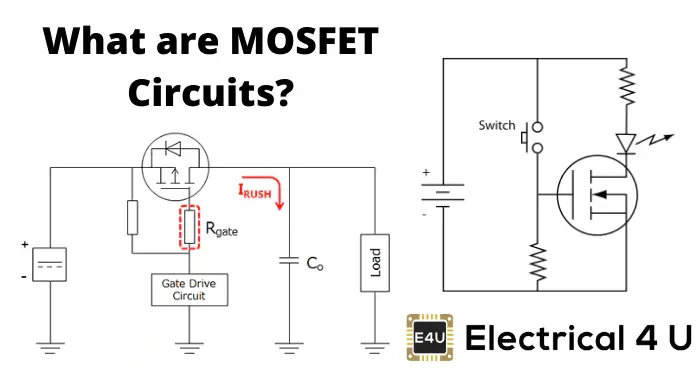Okay, let’s talk about these MOSFET things. I remember when I first started tinkering, needing something better than the old bipolar transistors for switching bigger loads, you know? Faster, handled more juice, easier to drive sometimes.

Getting Started – The Usual Suspect
So I grabbed what everyone seemed to use first: the N-Channel Enhancement mode MOSFET. Seemed straightforward. Put voltage on the gate, it turns on. No voltage, it’s off. Simple enough, right? Perfect for switching stuff on the low side, connecting the load to ground. I used these all over the place. Hooked up LEDs, small motors, that kind of thing. Just had to make sure the gate voltage was high enough compared to the source pin. Easy peasy, mostly.
Then Came the High Side…
But then I hit a snag. I needed to switch power on the high side, connecting the load to the positive supply rail. Using my trusty N-Channel guy there was a pain. The gate voltage has to be significantly higher than the source, and when the source is connected to the load, its voltage goes up when it turns on! Suddenly I needed a gate voltage higher than my main power supply. That meant extra circuits, charge pumps, complications. Ugh.
That’s when I bumped into the P-Channel Enhancement mode MOSFETs. These guys are kind of the opposite. They sit on the high side, between the positive rail and the load. To turn them on, you pull the gate voltage low, towards ground, or at least significantly lower than the source (which is tied to the positive rail). To turn them off, you bring the gate voltage up close to the positive rail. Solved my high-side switching problem neatly, though sometimes they’re a bit slower or have higher resistance than similar N-Channels. Trade-offs, always trade-offs.
The Weird Ones: Depletion Mode
For the longest time, that’s all I thought there was: N-channel and P-channel enhancement types. You apply power to the gate (relative to the source, anyway) to turn them on. But then, working on a fail-safe type of circuit, I stumbled across Depletion mode MOSFETs. These were weird.
- N-Channel Depletion: This one is normally on when the gate-source voltage is zero. You actually have to apply a negative voltage to the gate (compared to the source) to turn it off.
- P-Channel Depletion: Similar idea, but reversed. Normally on with zero gate-source voltage. You need to apply a positive gate voltage (compared to the source) to turn it off.
Honestly, I don’t run into these Depletion types nearly as often. They seem more niche. Maybe for current limiters or specific startup conditions where you need something conducting by default. Most of the breadboarding and projects I do, day-to-day, stick with the Enhancement mode guys.

Wrapping Up The Experience
So yeah, that’s been my journey with these MOSFET types. Started simple with the basic N-Channel switch. Ran into problems, discovered the P-Channel for high-side stuff. Then later found out about the normally-on Depletion types.
Mostly, you figure out:
- N-Channel vs P-Channel: Are you switching the connection to ground (N-Channel usually easier) or the connection to the positive supply (P-Channel often simpler for basic drive)?
- Enhancement vs Depletion: Do you want it OFF by default (Enhancement) or ON by default (Depletion)? 95% of the time, for me, it’s Enhancement.
It really just comes down to figuring out what you need the switch to do, where it sits in the circuit, and how you plan to drive that gate pin. Once you get the hang of those few types, they become super useful tools on the bench.

